





© 2024 OUCRU Indonesia
All rights reserved.
All photographs in this book are the property of OUCRU Indonesia and are used with written permission from the photographers and the individuals depicted. Every effort has been made to properly acknowledge the rightful owners of these photographs. All illustrations used in this book are in the public domain.
All activities of this project, including the publication of “Moro Kodi Pocket Book: An Introduction of Common Medicinal Plants in Kodi” is fully funded by OUCRU through Engagement Seed Award programme.
Moro Kodi is taken from Kodi language which mean plants used to treat diseases or Medicine from Kodi.
Kodi Bangedo is one out of 11 sub-districts in Southwest Sumba, East Nusa Tenggara. It is populated by approximately 17.239 (2022) people who live in 15 villages. The Kodi Bangedo people are well known for their local wisdom and customs which are applied to their daily lives, including healthcare aspects For instance, apart from visiting health facilities like primary healthcare (puskesmas) and hospitals, the people in Kodi still use plants around them to treat some diseases' symptoms. It was explained by several community members when OUCRU conducted the SPEAR study (2020 - 2022) and the SLIM study (2023)
Unfortunately, the information regarding the medicinal plants used by the people in Kodi Bangedo has not been widely documented and only passed down from generation to generation verbally. Departing from these conditions, OUCRU Indonesia together with students from Taman Siswa High School initiated this project. Apart from being involved in the interview process with local people to identify the variety of plants that are often used as medicine, the students also went around the villages to photograph them All data was triangulated to traditional healers and the elders through a series of focus group discussions. In the discussion, we also got more detailed information about common practices in processing the plant into medicine. All information is summarized in this pocketbook.
Furthermore, through this project, OUCRU Indonesia also wants to introduce health research to the youth, especially high school students in Kodi Bangedo. From the training and direct practices we've carried out, students are expected to learn how to document information, both in writing and photo platforms, and use it as data for further research. Students also practice how to deepen the data through interviews and group discussions as well as how to facilitate the meeting with people who are older than them By participating in this project, we hope students have more interest in health issues and research, especially those related to traditional medicine.
Finally, we would like to express our gratitude to the government of Umbu Ngedo village, the staff of Puskesmas Wallandimu, the principal and teachers of Taman Siswa High School, related government offices in Southwest Sumba, and all parties who we cannot mention one by one.
In the future, the small action we initiated today hopefully can encourage other researchers in Indonesia to conduct follow-up research, with one goal of improving the quality of health in Indonesia.
The content of this book has not been reviewed, approved, or endorsed by any medical or scientific authority. The information presented is for informational purposes only and should not be construed as professional medical or scientific advice.
Readers are encouraged to consult with a qualified healthcare professional or scientific expert before making any decisions based on the content of this book.
Neither the author nor the sponsor assumes any responsibility for any errors or omissions, or the outcomes of any actions taken based on the information provided in this book..

Jenita Kaka

Ardianus Bali





Anjelina Putri R, Mone

Astio Lendu


Teaching Supervisor

Diana Timoria Researcher

Ari Prihardhyanto Keim Researcher

Soraya Weldina Ragil Dien Translator

Hanifah Nisrina Graphic Designer
This book aims to documenting common knowledge and practice of family remedies in Kodi, Southwest Sumba, East Nusa Tenggara.
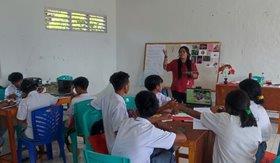
and interview trainings.
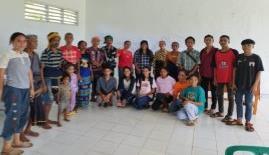

Students who have been trained, assisted by a researcher and teacher, collect information through series of focus group discussions with community representatives. From the information obtained, the students then photograph those plants.

After documented all plants, the students conducted in-depth interviews with few traditional healers in Kodi to triangulate the data, especially about its benefits and how to process those plants.
Photos and information of each plants, including its local and Latin names are summarized into a book.
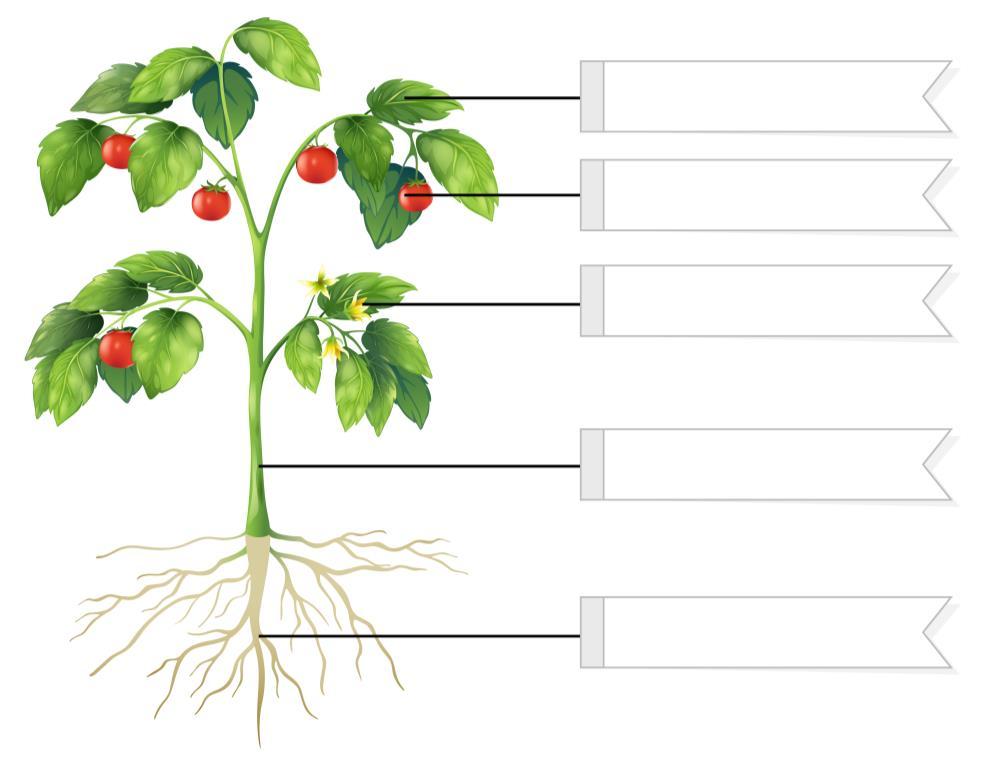

Local name: Royo mroto | Latin Name: Citrus x aurantiifolia (Christm.) Swingle
● Benefits: to reduce flu symptoms.
● How to use: Boil 15-20 lime leaves and mix it with clean water until warm. Use it for bathing.
The lime tree commonly found in the house yard of Kodi people.
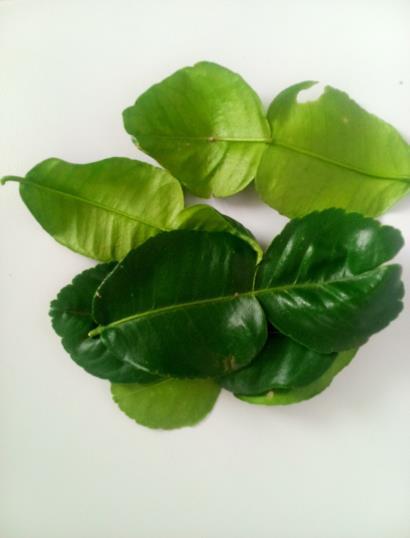
Local Name: Wuk Khihi Marapu | Latin Name: Pyrrosia piloselloides (L.) M.G Price
● Benefits: to cure kidney disease.
● How to use: Boil the leaves together with Telinga Kerbau leaves and Holy Basil. Drink it when it’s warm.
Uniquely, in Kodi this plant known as Evil’s button (Kancing Baju Setan). It is usually found attached and hanging in the large trees like Kusum or Mango trees.
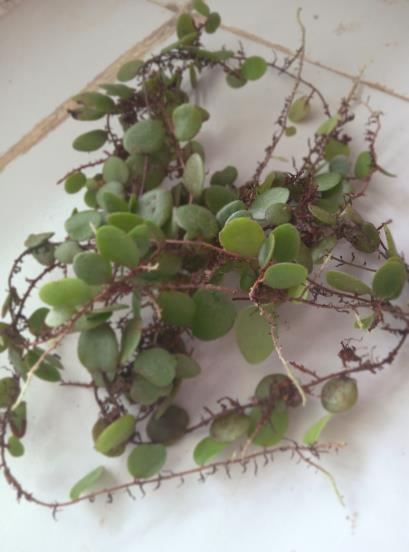
Local Name: Royo Prutu | Latin Name: Citrus hystrix DC
● Benefits: to relieve toothache
● How to use: boil 7 kaffir lime leaves with 2 glasses of water and reduce until 1 glass remain. Use it as a mouthwash 3 times a day.
Keffir lime usually grows in the houses or garden.

Local Name: Kawongu | Latin Name: Hibiscus tiliaceus L.
● Benefits: to relieve headache and fever.
● How to use: Grind the shoots, mix it with coconut milk and warm water until it turns into a paste. Rub the mixture paste to the head and massage it gently. Leave it dry then rinse off.
This plant grows wildly on the side of village roads.

Local Name: Royo Jambu | Latin Name: Psidium guajava L.
● Benefits: to treat diarrhea.
● How to use: Chew 2 – 3 guava shoots, swallow the chewed water, and spit out the pulp.
Guava trees often used as a shade tree in front of the houses.

Local Name: Royo pandan | Latin Name: Pandamus amaryllifolious Roxb.
● Benefits: reduce the effect of food/drink poisoning and improve body vitality.
● How to use: boil pandan leaves with water and use it for bathing.
Pandan grows wildly around the village. Apart from being used as medicine and food ingredients, people in Kodi also weave pandan leaves to make mats.

Local Name: Royo Nimba | Latin Name: Azadirachta indica A. Jus
● Benefits: to relieve fever, dizziness, and headaches.
● How to use: Boil 5 to 7 small branches of neem leaves. Leave it warm and drink.
Neem trees often used as house’s fence and a shade tree in village roads.

Local Name: Routta | Latin Name: Piper betle L.
● Benefits: to relieve eye infection.
● How to use: wash 3-5 betel leaves then squeeze it gently. In a separate container (like a bowl or plate), prepare adequate clean water and mix it with the squeezed betel leaves. Soak them for a few minutes and take out the leaves, Tilt your head down, open your eye, and move your eyeball around to help the liquid wash the whole surface.
The betel plant is commonly found attached to other trees, like areca nuts and coconut, or growing on the wall.

● Benefits: to relieve fever.
● How to use: Mash yellow papaya leaves, mix with some warm water, and squeeze until you get a quarter glass of its juice to drink.
Papaya tree can be found easily around the village. The people consume its leaves, flowers and fruits.
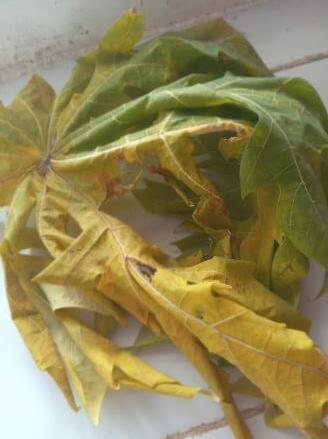
Local Name: Royo kapuka kloudawa | Latin Name: Carica Papaya L.
● Benefits: to stop bleeding from an open wound.
● How to use: wash then chew papaya shots, as needed. Apply the chewed leaves to cover the bleeding wound.
Papaya tree can be found easily around the village. The people consume its leaves, flowers and fruits.

Name:
● Benefits: To treat scabs and relieve itch.
● How to use: Wash 3 – 4 stems of forest ginger. Boil it along with its leaves and roots. Mix with the clean water and use it for bathing, twice a day until the itch reduced.
Ginger forest can be found on the edge of the forest.

● Benefits: to treat wounds.
● How to use: Boil 4 shoots of Bellyache Bush. Use it for bathing or cleaning the wounds.
This plant grows wildly on the roadsides.

Local Name: Rodagha nyale | Latin Name: Ocimum tenuiflorum L.
● Benefits: To reduce back pain and muscle soreness.
● How to use: Boil 7 – 10 shoots along with Dragon’s scale and Ngai Champor leaves. Leave it until warm to drink.
This plant grows wildly around the village and roadsides. People usually cooked it with sea worm, or Nyale in Kodi language, during the Pasola ritual.

Local Name: Royo Krara | Latin Name: Artocarpus altilis Fosberg
● Benefits: to relieve back pain.
● How to use: Boil 3-4 breadfruit leaves with a pinch of salt for 5 minutes. Drink while it's warm.
People in Kodi plant breadfruit in their house yard and consume the fruit as snack or side dish.

Local Name: Royo sambiloto | Latin Name: Andrographidis paniculata (Brum.f.) Nees
● Benefits: to reduce malaria symptoms like headaches, fever, and malaise.
● How to use: Boil a few stems of green chiretta in 2-3 glasses of water. Reduce until only 1 glass of liquid remains. Drink while it's warm.
This plant grows wildly near villagers plantations and houses.
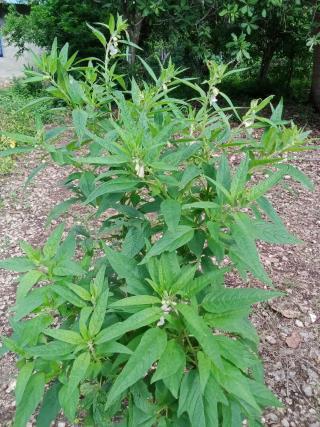
Local Name: Royo kapuka kloudawa | Latin Name: Blumea balsamifera (L.) DC.
● Benefits: to reduce back pain and muscle soreness.
● How to use: Boil few shoots along with Dragon’s scale and Holy Basil leaves. Leave until warm to drink.
In Kodi, this plant is known as Buffalo Ears (Telinga Kerbau). It grows wildly on the roadsides.
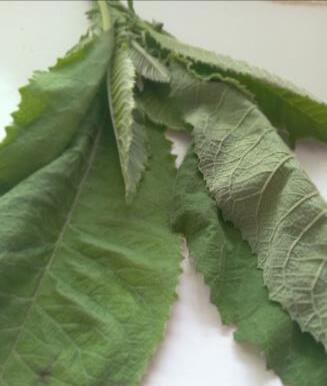
Local Name: Royo Mahoni | Latin Name: Swietenia mahagoni (L.) Jacq.
● Benefits: to reduce malaria symptoms like fever and limp.
● How to use: Boil 5-7 small branches of Mahogany leaves along with some Kusum leaves. In a clean bucket, mix the boiled liquid with clean water until warm and use for bathing.
The Mahogany tree is commonly found in the village as shade on the roadside.

Local Name: Royo Hadda | Latin Name: Phyllanthus debilis J.G.Klein ex Willd.
● Benefits: to treat coughs in children.
● How to use: take 5-7 stems of niruri along with its leaves and roots, wash until clean and boil it. Drink while it's warm.
This plant grows wildly near the community plantation and on the roadside.
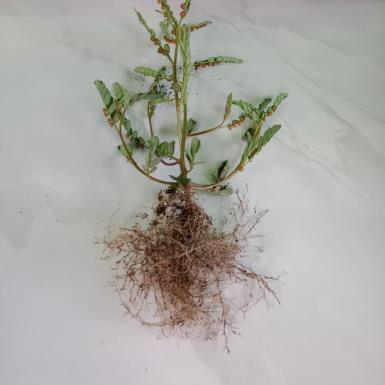
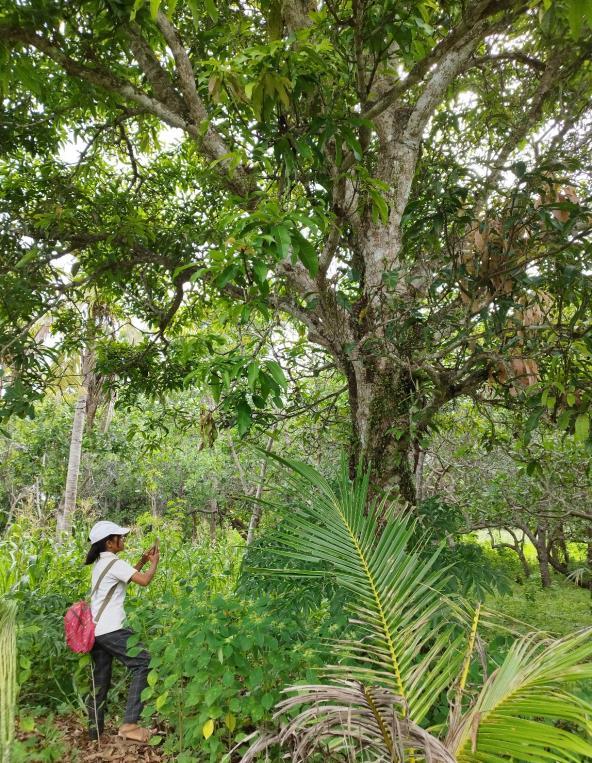
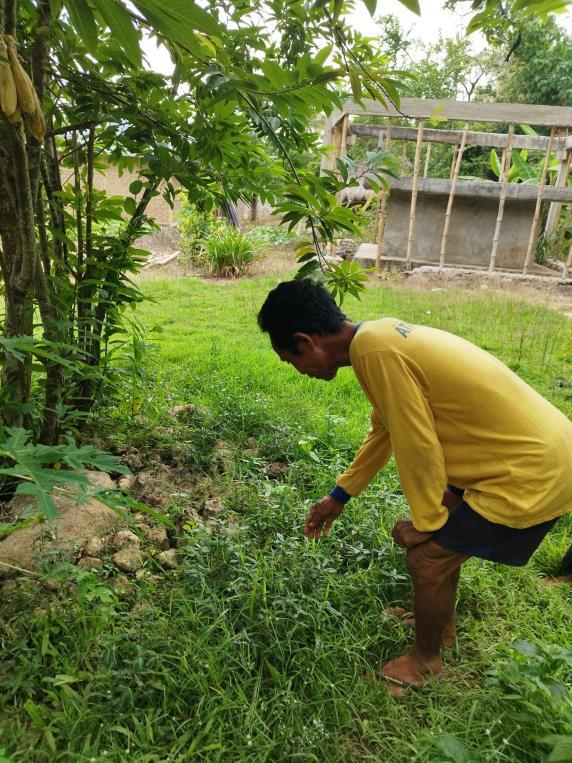
Local Name: Bunga Kalibatu | Latin Name: unknown
● Benefits: to relieve headache.
● How to use: take 4-6 stems of Bunga Kampung along with its leaves and flowers, wash until clean and mash it along with grated coconut. Apply the paste on the head and massage gently.
The latin name of this plant is not yet identified. This plant grows wildly near houses and roadside.

Local Name: Walla Kordahi | Latin Name: Annona muricata L.
● Benefits: to relieve respiratory problems, such as asthma.
● How to use:
Adult: boil approximately 27 soursop flowers and drink while it's warm.
Children: boil around 9 soursop flowers and drink while it's warm.
The people in Kodi usually plant the soursop tree near their houses.
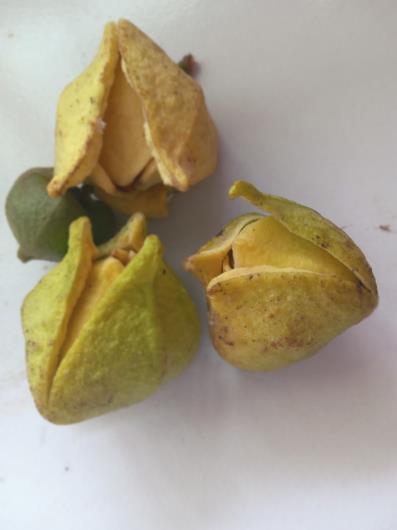
Local Name: Wu Ndaruto | Latin Name: Citrus × aurantiifolia (Christm.) Swingle
● Benefits: to treat cough.
● How to use: take a half-ripe lime then cut them half. Squeeze the lime and take the juice. Add 2 spoons of sweet soy sauce into a clean container, mix with the lime juice. Stir until the color changes into brownish. Drink 3 times a day until cured.
The lime tree can be found easily near the houses and garden.

Local Name: Wuyo Klanglulu Kodi | Latin Name: Annona squamosa
● Benefits: to relieve dizziness and headache.
● How to use: cut 4 raw custard apple to medium bits, boil, and drink while it's warm.
The custard Apple is also known as the Anona/Nona fruit. The people in Kodi usually plant the tree near their houses and gardens.
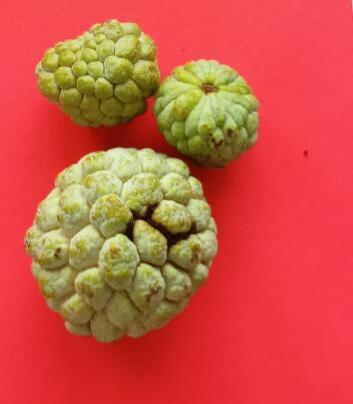
Local Name: Wu Lamtoro | Latin Name: Leucaena leucocephala (Lam) de Wit
● Benefits: to relieve colic.
● How to use: peel off the white leadtree fruit skin and eat the seeds inside.
The tree can be found easily in the village, both as a shade for the house or on the roadside.
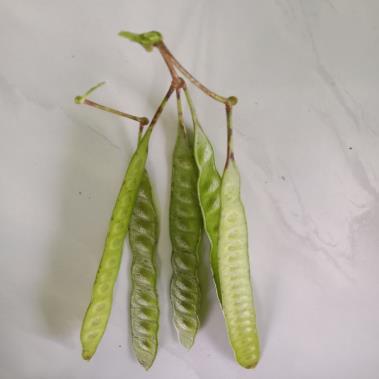

Local Name: Klut Khepeke | Latin Name: Moringa oleifera L.
● Benefits: to relieve diabetes symptoms.
● How to use: Boil 4 palm-size Moringa barks with 1 liter of water until the water is reduced and only 1 glass remains. Drink while it's warm, regularly in the morning and afternoon until the symptoms improved.
Moringa tree is commonly found around the houses and garden.
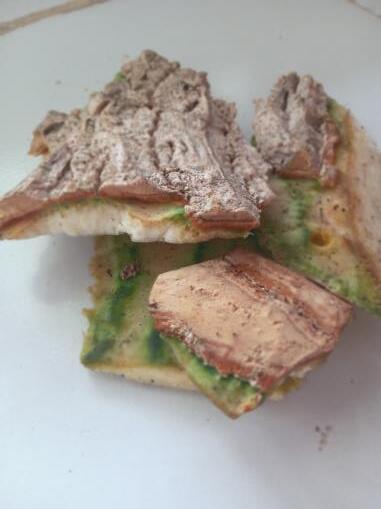
Local Name: Klut Poyo | Latin Name: Mangifera indica L.
● Benefits: to relieve toothache.
● How to use: Peel 2-3 palm-sized mango bark, rinse with clean water, and boil. Drink while it's warm or use as a mouthwash and gargle for 30 seconds.
People plant mango tree in front of their houses or in the garden.

Local Name: Klut ling | Latin Name: Gnetum gnemon L.
● Benefits: to increase haemoglobin/red blood cells.
● How to use: Boil approximately 2-3 palm-sized Melinjo bark along with dried betel nuts. Drink while it's warm twice a day.
Melinjo trees commonly found on the roadside and in the gardens.

Local Name: Klut Komi | Latin Name: Schleichera oleosa Merr.
● Benefits: to relieve sore muscles.
● How to use: Rinse 3-4 palmsized kusum bark with clean water, and boil together with 710 small branches of Kusum leaves. After boiling, pour into a clean bucket, mix with clean water until warm and use for bathing.
Kusum trees commonly found in the village, on the roadside or in the garden.


Local Name: Poll wi | Latin Name: Colocasia esculenta (L.) Schott
● Benefits: to treat snake bites.
● How to use: slice one taro stalk into thin layers. Mix it with lime paste (the mixture of camphor and betel nut) and rub it on the skin that was bitten by snake.
People usually plant taro among the main crops in their gardens.
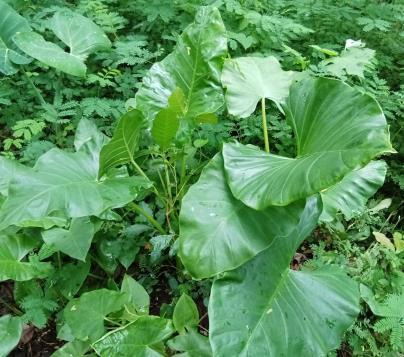
Local Name: Klut Kaha | Latin Name: Tamarindus indica L.
● Benefits: to relieve fever, limps and fatigue.
● How to use: Peel 4-6 palm-sized of Tamarind bark, rinse with clean water, and boil along with some branches of its leaves. After boiling, pour into a clean bucket, mix with clean water until warm and use for bathing.
Tamarind often used as a shade tree for houses or roadside.
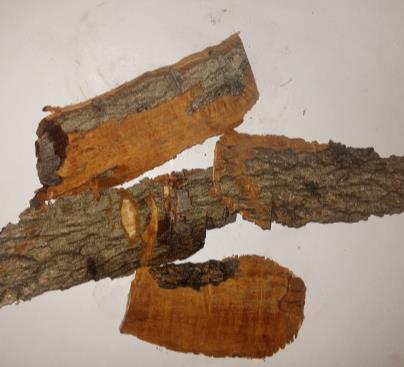

Local Name: Royo Ndom | Latin Name: Jatropha curcas L.
● Benefits: to reduce bruises on skin.
● How to use: Boil 6 palm-size Physic Nut bark with 15 liters of clean water. After boiling, pour it to a large container, leave it warm and use it for bathing twice a day, morning and afternoon for 2 days. If the bruises hasn't
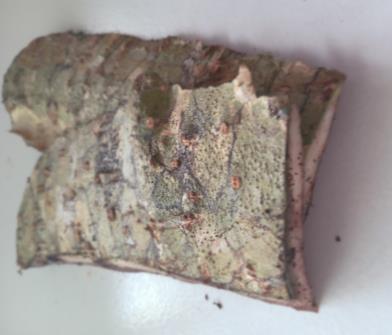
This plant is usually found in the roadside. reduce, change the bark and reheat the wat or made a new one.

Local Name: Amu Tembere | Latin Name: Imperata cylindrica (L.) P.Beauv.
● Benefits: to cure snake bites.
● How to use: chew approximately 3 roots of cogongrass, swallow the liquid, and rub the residue on the snake bite marks.
This plant grows wildly on the roadside.

Local Name: Amu Krabbu dede | Latin Name: Cucurbita moschata Duchesne
● Benefits: to relieve difficulty urinating.
● How to use: Adult: boil around 13 cleaned roots and drink while it's warm.
Children: boil around 7 cleaned roots and drink while it's warm.
This type of pumpkin also known as Labu Berdiri or standing pumpkin. It is usually found around the house or school yards.

Local Name: Amu Labba | Latin Name: Areca catechu L.
● Benefits: to relieve fever and shivering.
● How to use: wash 7-10 one-inch areca roots and boil. Mix with clean water until warm and use for bathing.
Betel nut is an important fruit for the Kodi’s people. They consume it along with lime paste as a welcome dish when someone is visiting them.
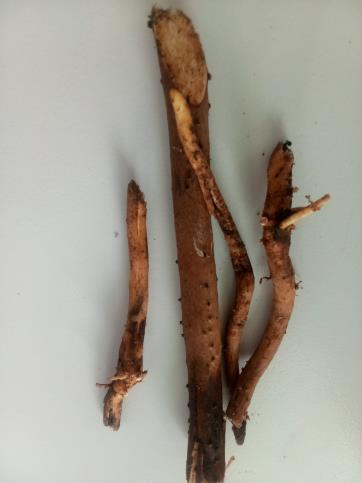
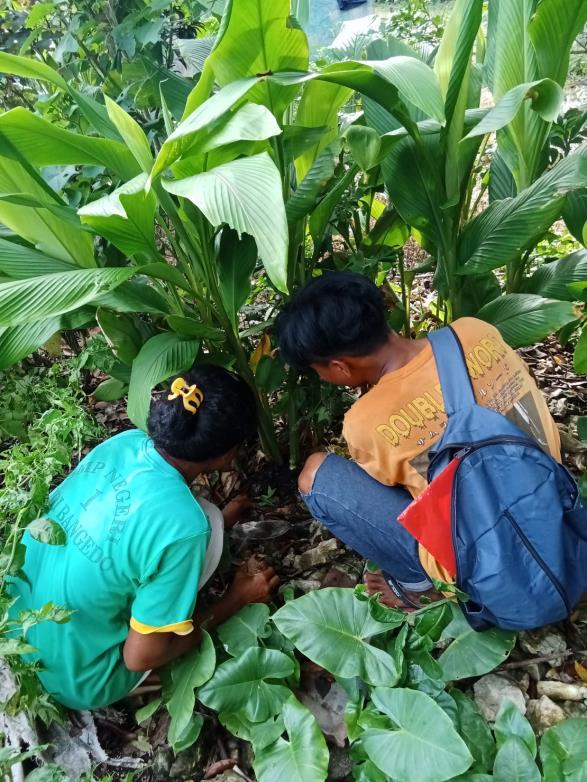

● Benefits: to relieve cough.
● How to use: take approximately 3 ginger tubers, peel off the skin, and slice. Boil with 4 glasses of water to reduce until 1 glass remain. Drink while it's warm.
In Indonesia, especially NTT, Ginger is also known as Halia. One of common herbs for Kodi people. They plant it around/near the house and use it for cooking. Ginger also can be found in the traditional market.
● Benefits: often used as mosquito repellent and warms the body.
● How to use:
As a mosquito repellent, plant few bunches of lemongrass around the house. The scent will deter mosquitoes.
To warm the body, take 4-5 stalks of lemongrass, crush the white part, and boil. Drink while it's warm.
Lemongrass can be found around houses or in the garden. It is also added to the local dishes. Lemongrass also can be found easily in the traditional market.


● Benefits: to improve high uric acid symptoms and relieve stomachache.
● How to use: chop a few cloves of shallot, mix with some slices of ginger and coconut oil. Use the mixture to massage the stomach or other body parts.
Shallots are often used as an ingredient of local dishes in Kodi. Since it only grows on a specific type of soil and climate, people usually buy it in the traditional market.
Name:
● Benefits: to heal wounds.
● How to use: grate turmeric as much as needed to over the surface of the wound. Mix the grated turmeric with some oil (preferrably coconut oil), and heat to warm. Use the warm mixture to cover the wound twice a day.
Turmeric is usually planted near the house and can be found in the traditional market too. People also use turmeric in cooking.


Local Name: Lono Kaka | Latin Name: Allium sativum L.
● Benefits: to relieve bloated stomach.
● How to use: chop 6 cloves of garlic into 4 and mix with oil (preferrably coconut oil). Store it in a warm place for 4 days and use it to massage.
Garlic often used as an ingredient of local dishes in Kodi. Since it only grows on specific type of soil and climate, people usually buy it in the traditional market.
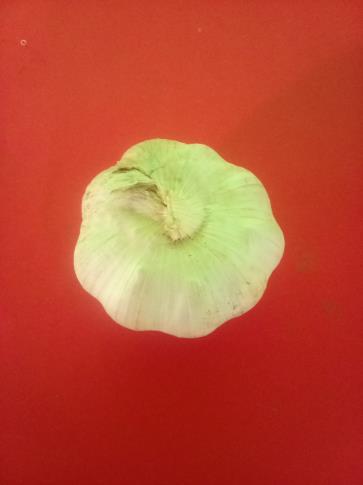
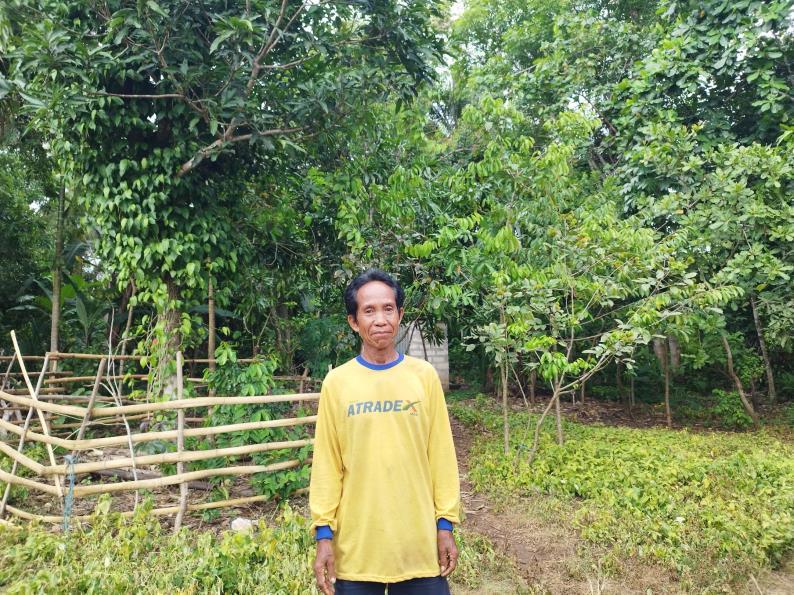







Connect with us: linktr.ee/OUCRUIndonesia
Contact: info@oucru.org t+ 62 21 2359 9099 +62 21 3190 0971 oucru.org